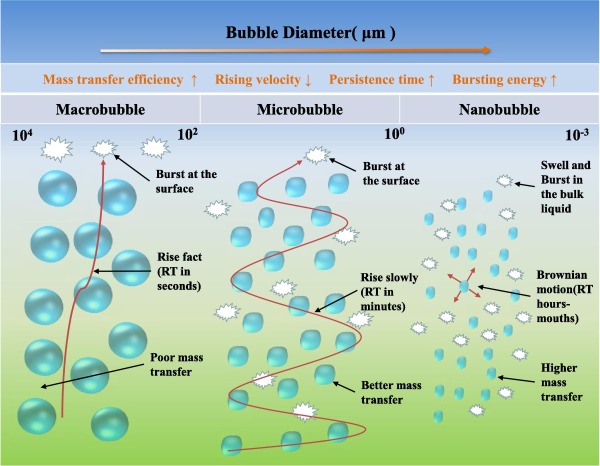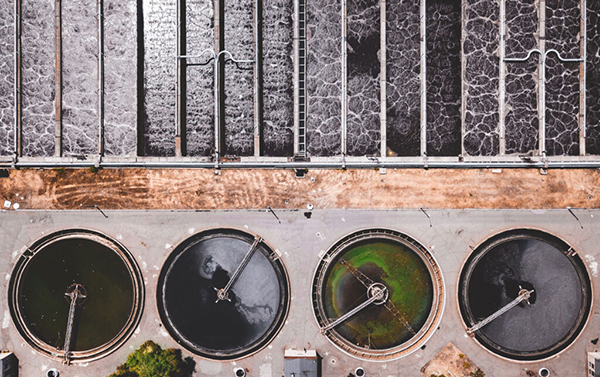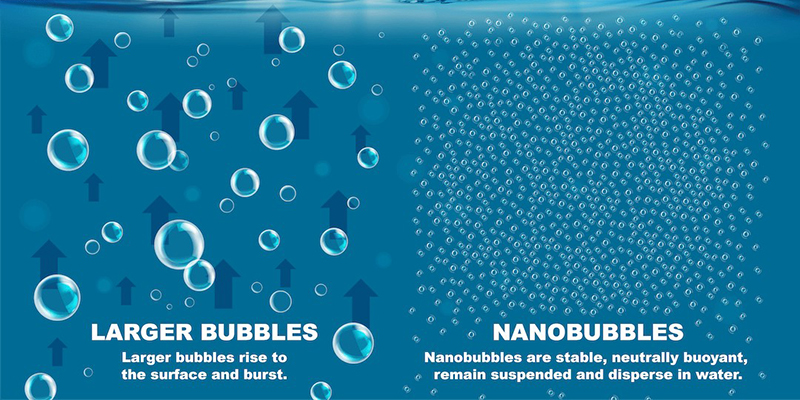In today’s world of growing water scarcity, strict discharge regulations, and the rising cost of treatment, the demand for innovative and sustainable water management solutions is stronger than ever. One technology rapidly gaining attention is Nanobubble Technology in Wastewater Treatment.
At AIMEQUIP, we believe in staying at the forefront of smart treatment systems. Nanobubbles are transforming conventional aeration and oxidation methods by offering more efficient gas transfer, better pollutant breakdown, and lower sludge production — all while reducing chemical dependency.
What is Nanobubble Technology in Wastewater Treatment?
Nanobubbles are extremely small gas bubbles, typically under 200 nanometers in diameter, that behave very differently from conventional air bubbles. They remain suspended in liquid, do not rise quickly, and have a long lifespan, from hours to even days, making them ideal for advanced wastewater treatment applications.
Key Characteristics of Nanobubbles:
| Feature | Nanobubbles | Microbubbles |
| Size | < 200 nanometers | 10–100 micrometers |
| Buoyancy | Neutral – do not rise | Positively buoyant – rise quickly |
| Stability in Water | Hours to weeks | Seconds to minutes |
| Gas Transfer Efficiency | Very high (due to long retention and surface area) | Moderate |
| Behavior | Stay suspended, interact with surfaces | Quickly escape to surface |
| Collapse Effect | Generate reactive oxygen species (ROS) | No chemical byproducts |
| Surface Charge | Strong negative zeta potential | Weak or neutral |
Stability and Behavior of Nanobubbles
Nanobubble Technology in Wastewater Treatment is unique due to the long-term stability of nanobubbles and their reactive behaviors:
- Neutral Buoyancy: Nanobubbles do not rise like macro or microbubbles, allowing for prolonged retention in water.
- Electrostatic Repulsion: Their strong negative surface charge prevents coalescence and stabilizes them in solution.
- Localized Collapse: When nanobubbles collapse (due to temperature or pressure), they release energy that forms reactive oxygen species (ROS).
- Deep Penetration: Nanobubbles can reach inside sludge flocs, porous media, or dense microbial films—enhancing oxygen delivery and microbial activity.
These behaviors make nanobubbles not just small bubbles, but powerful treatment agents.

Advantages of Nanobubble Technology in Wastewater Treatment
1. Improved Oxygen Transfer Efficiency (OTE)
Traditional aeration methods are inefficient, wasting energy and limiting biological reaction rates. Nanobubble systems:
- Increase dissolved oxygen (DO) levels to 7.0 mg/L or more
- Offer over 30% OTE, compared to 10–15% with fine bubbles
- Reduce energy demand from blowers by allowing shorter or less frequent operation
This is critical in systems like activated sludge, SBR, and MBBR, where oxygen demand is high.
2. Reduced Sludge Production
Nanobubble Technology in Wastewater Treatment helps lower the amount of waste sludge generated, a major benefit in terms of disposal cost and environmental impact.
How?
- Nanobubbles deliver oxygen deeper into microbial flocs, promoting complete digestion
- They stimulate bacterial autolysis and protozoan predation, naturally reducing biomass
3. Chemical-Free Disinfection and Advanced Oxidation
Nanobubble collapse leads to the formation of reactive oxygen species (ROS) such as:
- Hydroxyl radicals (•OH)
- Hydrogen peroxide (H₂O₂)
- Superoxide anions (O₂⁻•)
These radicals:
- Destroy pathogens
- Oxidize organic contaminants
- Eliminate odors and color
This reduces the need for chemicals like chlorine or ozone, lowering treatment costs and environmental risks.
4. Enhanced Nutrient Removal
Nanobubble Technology in Wastewater Treatment is also highly effective in nitrogen and phosphorus removal, critical for regulatory compliance and environmental health.
- Ammonia and TKN are removed more efficiently due to increased oxygen availability.
- Phosphorus is taken up more completely by PAOs in nanobubble-rich environments.
In trials, nanobubble-equipped systems achieved 100% removal of nitrogen and phosphorus under real operating conditions.
Real-World Applications of Nanobubble Technology in Wastewater Treatment
| Industry / System | Benefits of Nanobubbles |
| Municipal wastewater plants | Reduced energy, fewer chemicals, higher effluent quality |
| Food, dairy, and meat industries | Enhanced organic degradation and sludge reduction |
| Mining & mineral processing | Better metal removal and improved flotation |
| Remote & decentralized systems | Low-footprint, low-maintenance, chemical-light operation |
| Effluent reuse / polishing | ROS-driven disinfection, turbidity and odor removal |

How AIMEQUIP Implements Nanobubble Solutions
At AIMEQUIP, we provide modular and fully customized nanobubble systems that integrate seamlessly into:
- MBBR and SBR reactors
- Containerized or remote wastewater units
- Retrofits on DAFs, lagoons, or polishing stages
We offer:
- Bubble size control from 20–200 nm
- Multiple gas options: air, oxygen, ozone
- Units scaled from <1 m³/h to 200+ m³/h
📩 Let’s Get Started
Interested in seeing what Nanobubble Technology in Wastewater Treatment can do for your site?
Explore our Wastewater Solutions
Contact AIMEQUIP for a free consultation or custom system design.

